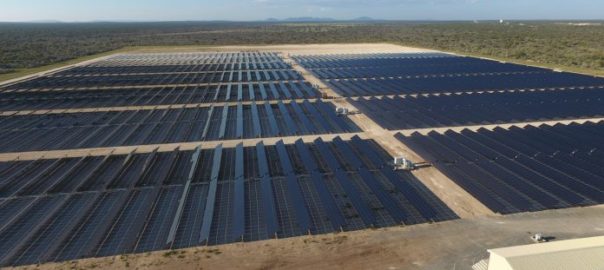B2Gold has provided an update on the solar power plant working at its Otjikoto gold mine, in Namibia, in its 2018 financial results, confirming that the installation is making savings when it comes to heavy fuel oil (HFO) use and power generation costs.
On May 29, the company celebrated the official opening of the solar plant, one of the first fully-autonomous hybrid plants in the world.
At the time, B2Gold said it would allow the company to significantly reduce fuel consumption and greenhouse gas emissions from the site’s current 24 MW HFO power plant. The shift to an HFO solar hybrid plant was, at that point, expected to reduce Otjikoto’s HFO consumption by approximately 2.3 million litres and reduce associated power generation fuel costs by approximately 10% in 2018.
B2Gold selected Caterpillar and Cat® dealer Barloworld for the 7 MW solar power solution. The full system included Cat photovoltaic solar modules and the Cat microgrid master controller.
In the company’s 2018 results, B2Gold said the plant was now providing approximately 13% of the electricity consumed on site.
And, the plant had also achieved its expected HFO consumption and power generation fuel cost results: “Changing the power plant to an HFO solar hybrid plant reduced Otjikoto’s HFO consumption by approximately 2.4 million litres and reduced associated power generation fuel costs by approximately 10% in 2018,” B2Gold said.








